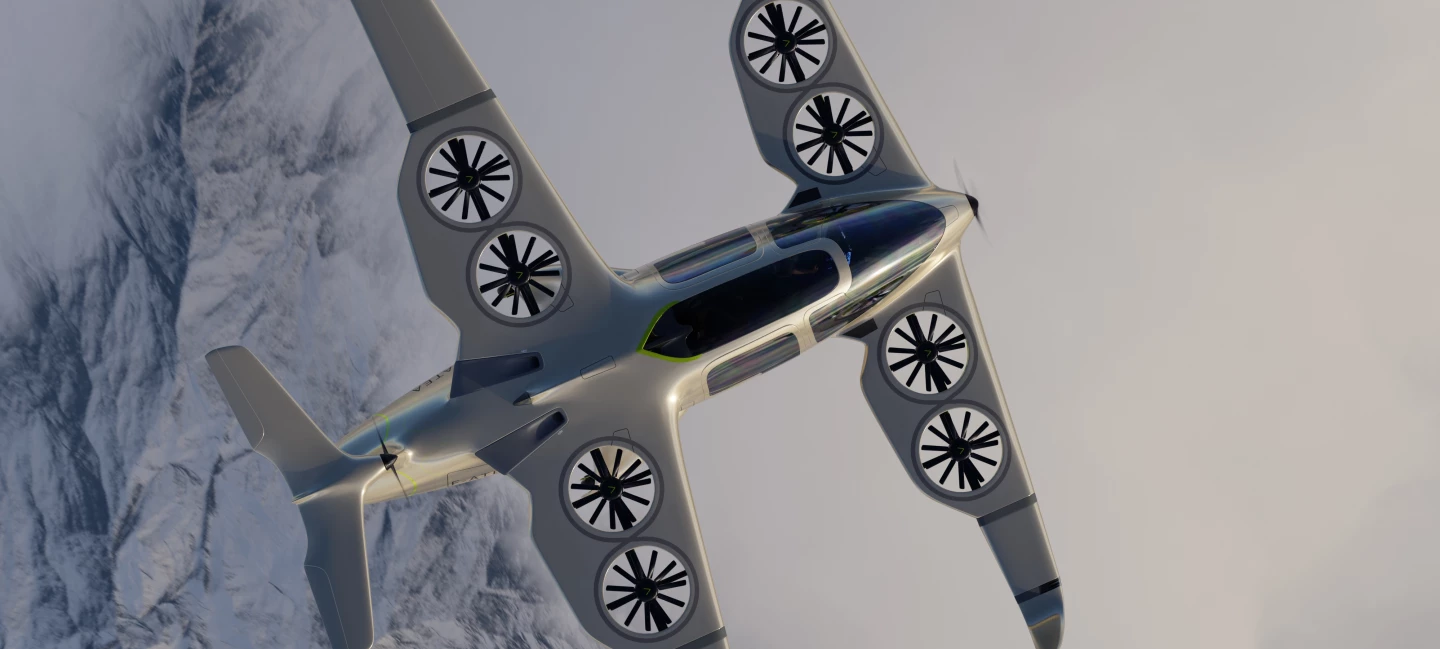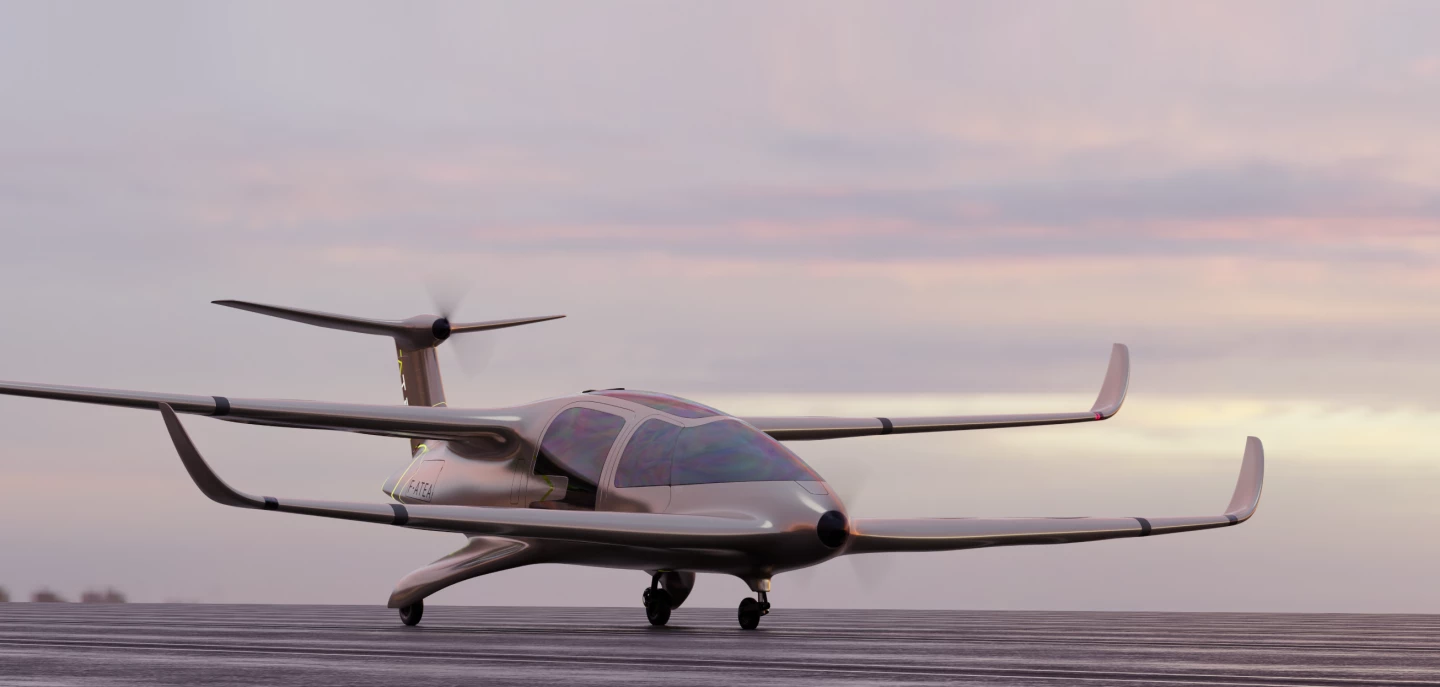France's Ascendance has released an updated design and range figure for its long-range, fan-in-wing, eVTOL air taxi. The Atea will use batteries and kerosene for energy storage, but its modular hybrid system will eventually support hydrogen as well.
When we first encountered this company back in February, Ascendance was proposing something much more like a regular airplane, with just three weird inside-out fans handling VTOL duties. Now, the company has put a much more robust looking design on the table.
Instead of a single wing, there are now large front and rear wings. The fan-in-wing lift and cruise design stays, although the fans are conventional instead of inside-out, and there are now two in each wing for a total of eight vertical lift fans.
The conventional cruise prop stays on the front, and a second cruise fan mounted high on the T-tail of the aircraft gives some added forward propulsion. The cabin will seat five.

Ascendance doesn't make any claims on speed at this stage, but we'll be interested to see how the fan-in-wing setup fares in terms of drag and top speed as compared to the open props used in most lift and cruise configurations. There doesn't appear to be any sort of fan cover mechanism, so we'd expect them to cause some turbulence.
On noise, Ascendance claims it will generate "four times less noise emissions than a helicopter," but that's a weird, awkward and non-specific kind of promise to make as well, since perceived noise and the decibel scale don't necessarily line up.

At launch, the company says the Atea will offer a two-hour, more than 400-km (250-mile) range with a 10-minute turnaround on the ground, thanks to quick jet fuel refueling. While it's not a clean solution like the proper eVTOLs, the company claims it'll deliver "a reduction in carbon emissions up to 80 percent," compared to a helicopter, thanks to its efficient generator and electric powertrain.
While hybrid systems are obviously not where anyone wants this tech to end up, perhaps this is a practical way to service longer-distance trips in the early days of the eVTOL revolution. Ascendance's "Sterna" system treats its power systems as modules, and the company is making provisions to adapt to biofuel and synthetic fuel generators if necessary. At the end of the day, the plan is to use a hydrogen range-extending system once that technology is proven and easy to drop in.
Ascendance claims "production is scheduled for 2025," that the "first public flights of the aircraft are scheduled for 2024" at the Paris Olympics, and that "the entire aircraft has been designed in compliance with the requirements of EASA SC-VTOL regulations and their associated Means of Compliance on the vehicle end."

It'll still have to go through the notoriously expensive certification process, though, so even after the company's recent €10-million (US$11.3-million) funding round, somebody's going to need to back up a big truck and dump a ton more cash into Ascendance before it's got a chance to get certified and into mass production.
Source: Ascendance













